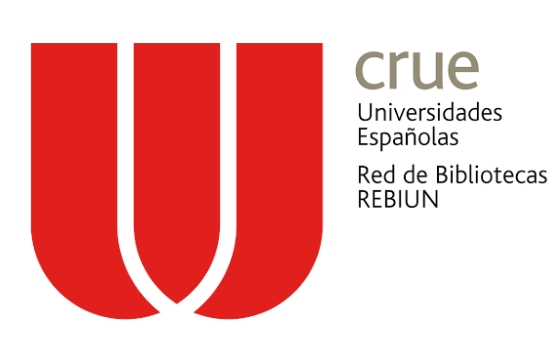Three approaches in the research field of ethnomodeling: emic (local), etic (global), and dialogical (glocal)
Palabras clave:
Etic, Emic, Dialogical, Ethnomodeling, Ethnomathematics, Mathematization, Ética, Êmica, Dialógica, Etnomodelagem, Etnomatemática, MatematizaçãoResumen
Abstract
The acquisition of both emic (local) and etic (global) knowledge is an alternative goal for the implementation of ethnomodeling research. Emic knowledge is essential for an intuitive and empathic understanding of mathematical ideas, procedures, and practices developed by the members of distinct cultural groups. It is essential for conducting effective ethnographic fieldwork. Furthermore, emic knowledge is a valuable source of inspiration for etic hypotheses. Etic knowledge is essential for cross-cultural comparisons, which are based on the components of ethnology. In this regard, such comparisons demand standard units and categories to facilitate communication. Dialogical (glocal) is a third approach for ethnomodeling research that makes use of both emic and etic knowledge traditions through processes of dialogue and interaction. Ethnomodeling is defined as the study of mathematical phenomena within a culture because it is a social construct and is culturally bound. Finally, the objective of this article is to show how we have come to use a combination of emic, etic and dialogical (glocal) approaches in our work in the area of ethnomodeling, which contributes to the acquisition of a more complete understanding of mathematical practices developed by the members of distinct cultural groups.
Resumo
A aquisição de ambos os conhecimentos êmico e ético é um objetivo alternativo para a implementação da pesquisa em etnomodelagem. O conhecimento êmico é essencial para o entendimento intuitivo e empático das ideias, procedimentos e práticas matemáticas desenvolvidas pelos membros de grupos culturais distintos. Esse conhecimento também é essencial para a condução de trabalho de campo etnográfico. Além disso, o conhecimento êmico é uma fonte valiosa de inspiração para hipóteses éticas. O conhecimento ético é essencial para a comparação entre as culturas, que é baseada nos componentes da etnologia. Nesse sentido, essas comparações demandam unidades e categorias padronizadas para facilitar a comunicação. A dialógica (glocal) é a terceira abordagem para a pesquisa em etnomodelagem que utiliza as tradições e os conhecimentos êmico e ético por meio de processos de diálogo em interação. A etnomodelagem é definida como o estudo de fenômenos matemáticos dentro de uma cultura porque é um construto social e culturalmente enraizado. Finalmente, o objetivo desse artigo é mostrar como utilizamos a combinação das abordagens êmica, ética e dialógica (glocal) em nosso trabalho na área de modelagem, que contribui para a aquisição de um entendimento mais completo das ideias, noções, procedimentos e práticas matemáticas desenvolvidas pelos membros de grupos culturais distintos.
Descargas
Citas
Ascher, M. (2002). Mathematics elsewhere: An exploration of ideas across cultures. Princeton, NJ: Princeton University Press.
Berry, J. W. (1990). Imposed etics, emics and derived emics: Their conceptual and operational status in cross-cultural psychology. In T. N. Headland, & M. Harris (Eds.), Emics and etics: The insider-outsider debate (pp. 84-89). Newbury Park, CA: Sage.
Berry, J. W. (1999). Emics and etics: A symbiotic conception. Culture & Psychology, 5, 165-171.
Craig, E. (1998). Routledge encyclopedia of philosophy: Questions to sociobiology. New York, NY: Routledge.
D’Ambrosio, U. (1990). Etnomatemática [Ethnomathematics]. São Paulo, SP, Brazil: Editora Ática.
D’Ambrosio, U. (1993). Etnomatemática: Um programa [Ethomathematics: A program]. Educação Matemática em Revista, 1(1), 5-11.
D’Ambrosio, U. (2001). What is ethnomathematics and how can it help children in schools?. Teaching Children Mathematics, 7(6), 308-310.
Eglash, R. (1999). African fractals: Modern computing and indigenous design. New Brunswick, NJ: Rutgers University Press.
Eglash, R., Bennett, A., O’Donnell, C., Jennings, S., & Cintorino, M. (2006). Culturally situated designed tools: Ethnocomputing from field site to classroom. American Anthropologist, 108(2), 347-362.
Lett, J. (1996). Emic-etic distinctions. In D. Levinson & M. Ember (Eds.). Encyclopedia of cultural anthropology (pp. 382-383). New York, NY: Henry Holt and Company.
Martin, J. N., & Nakayama, T. K. (2007). Intercultural communication in contexts. Boston, MA: McGraw-Hill.
Orey, D. C. (2000). The ethnomathematics of the Sioux tipi and cone. In H. Selin, (Ed.), Mathematics across culture: The history of non-Western mathematics (pp. 239-252). Dordrecht, The Netherlands: Kluwer Academic Publishers.
Pike, K. L. (1954). Emic and etic standpoints for the description of behavior. Glendale, IL: Summer Institute of Linguistics.
Pike, K. L. (1996). With heart and mind: A personal synthesis of scholarship and devotion. Duncanville, TX: Adult Learning Systems.
Pollak, R., & Watkins, S. (1993). Cultural and economic approaches to fertility: Proper marriage or mésalliance?. Population and Development Review, 19, 467-496.
Rosa, M. (2000). From reality to mathematical modeling: A proposal for using ethnomathematical knowledge. Dissertação (Mestrado em Educação). College of Education. California State University, Sacramento, CA: CSUS.
Rosa, M. (2010). A mixed-methods study to understand the perceptions of high school leader about English language learners (ELL): the case of mathematics. (Doctorate dissertation). College of Education. California State University, Sacramento.
Rosa, M., & Orey, D. C. (2003). Vinho e queijo: Etnomatemática e modelagem! [Wine and cheese: ethnomathematics and modeling!]. BOLEMA, 16(20), 1-16.
Rosa, M., & Orey, D. C. (2006). Abordagens atuais do programa etnomatemática: Delinenando-se um caminho para a ação pedagógica [Current approaches in ethnomathematics as a program: Delineating a path towards pedagogical action]. BOLEMA, 19(26), 19-48.
Rosa, M., & Orey, D. (2009). Symmetrical freedom quilts: the ethnomathematics of ways of communication, liberation, and art. Revista Latinoamericana de Etnomatemática, 2(2), 52-75.
Rosa, M., & Orey, D. C. (2010). Ethnomodeling: a pedagogical action for uncovering ethnomathematical practices. Journal of Mathematical Modelling and Application, 1(3), 58-67.
Samovar, L., Porter, R., & Stefani, L. (1998). Communication between cultures. Belmont: Wadsworth Publishing Company.
Ting-Toomey, S., & Chung, L.C. (2005). Understanding intercultural communication. Los Angeles, CA: Roxbury Publishing Company.
Descargas
Publicado
Cómo citar
Número
Sección
Licencia
Derechos de autor
Una vez que el artículo es aceptado por la Revista Latinoamericana de Etnomatemática, los/as autores ceden los derechos para publicar y distribuir el texto electrónicamente, así como para archivarlo y hacerlo accesible en línea.
Los autores podrán distribuir su propio material sin solicitar permiso a la Revista Latinoamericana de Etnomatemática, siempre que se mencione que la versión original se encuentra en https://revista.etnomatematica.org
Copyright © 2008, Revista Latinoamericana de Etnomatemática
Todos los contenidos de la Revista Latinoamericana de Etnomatemática se publican bajo la Licencia Creative Commons Atribución 4.0 Internacional y pueden ser usados gratuitamente dando los créditos a los autores y a la Revista, como lo establece esta licencia.











